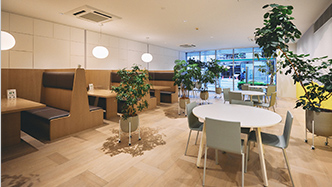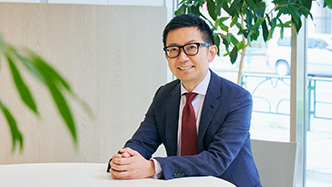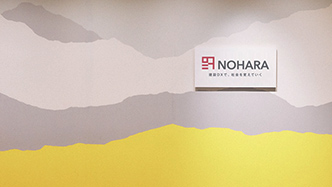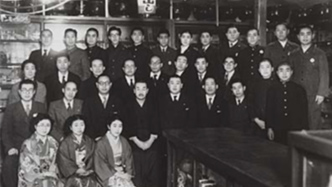Founding
1598
Founded in 1598 as a wholesale dealer of cotton at Iida city, Nagano, Japan.
1940
1947
Great Fire in Iida
On April 20, 1947, while the Nohara family was under the leadership of the thirteenth-generation heir Koichi Nohara, a great fire broke out in Iida City. The fire almost completely consumed the center of the city.
With only a small part of the Watahan storehouse surviving, the fire motivated Koichi, then 62 years old, to declare that he would transfer the reins of the business to his 32-year-old nephew Tatsuya (the founder president) and 28-year-old firstborn son Kokichi (the second-generation president).
Although the announcement took the two young men by surprise, they began the work of reconstructing the business from the charred rubble, keeping Koichi's words in mind: "Starting today, I leave you two in charge of Watahan. Do your best to work together. Don't forget the reputation that Watahan has built."
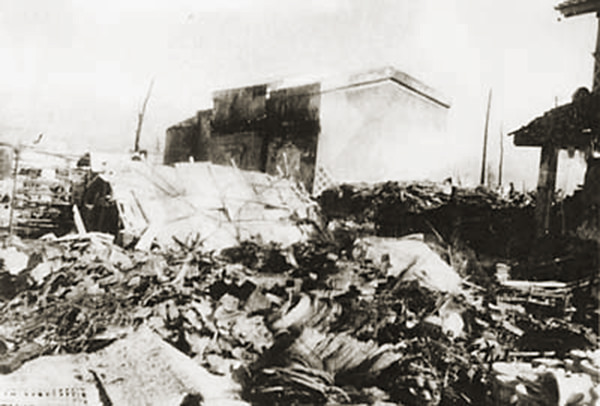
A Popsicle in Summer
What kind of business could be launched immediately in a city devastated by a massive fire? Why, Popsicles of course!
Tatsuya and Kokichi purchased a plot of land measuring about 130 square meters, and built a two-story barracks on it. After buying a state-of-the-art large-size refrigerating machine, they opened a café called "Alaska."
As its popularity grew, they loaded wooden cases of Popsicles onto bicycles and walked all over the city to sell them in places like parks and baseball fields.
Thanks to the strong initiative of the two young owners and their employees, sales of "Alaska" boomed. Within a single summer, they were able to redeem the cost of the refrigerating machine and even make an operating profit.
Tatsuya and Kokichi would later build on this success to leave Iida and finally make moves toward the establishment of a new company in Tokyo.
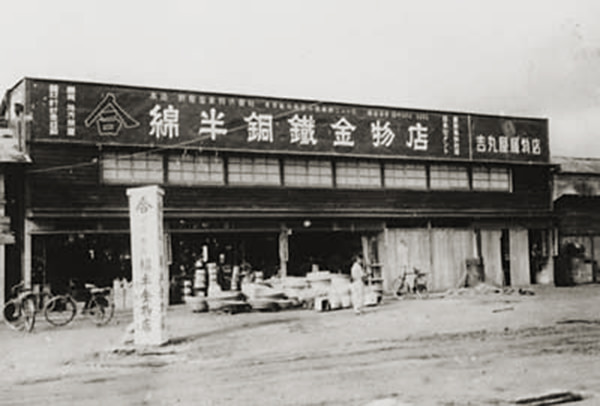
NOHARA CO., LTD. is established in Odawara-cho, Chuo-ku, Tokyo with ¥195,000 of capital and starts the construction materials business.
"New employees become shareholders"
At the end of the summer, Tatsuya and Kokichi shut down the Popsicle shop and sold the refrigerating machine to generate capital.
NOHARA CO.,LTD was born in Tokyo on September 11, 1947.
Tatsuya and Kokichi filled all the other positions on the board of the company with employees of the former shop in Iida, rather than their own relatives.
Having broken away from private management, they expanded their capital more and more until it had increased tenfold within just a year.
Meanwhile, they also implemented an "employee shareholder system" by putting aside 20% of each employee's monthly wages toward the acquisition of company stock.
NOHARA's management philosophy of making the best use of human resources and always working together with employees to protect and grow "their own" company served as the foundation for building the massive Watahan and NOHARA business groups within a single generation. That core remains unchanged to this day.
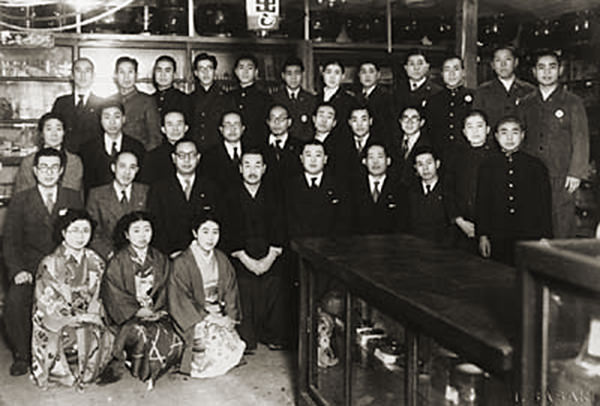
Mimeographed Guides
"If you can make it three years at NOHARA, you'll be successful anywhere." The rigor of the work and strict discipline at NOHARA were apparently legendary.
The company put great effort into its mimeographed guides for young employees.
With principles such as "Salesmanship," "28 Rules for Out-of-Store Sales," "The Rational Method and Tips for Collection of Receivables," and "Working Guidelines for Female Employees," NOHARA's comprehensive human-resource development characterized by a tough work ethic but fairness and respect toward individuals was reflected in its public reputation.
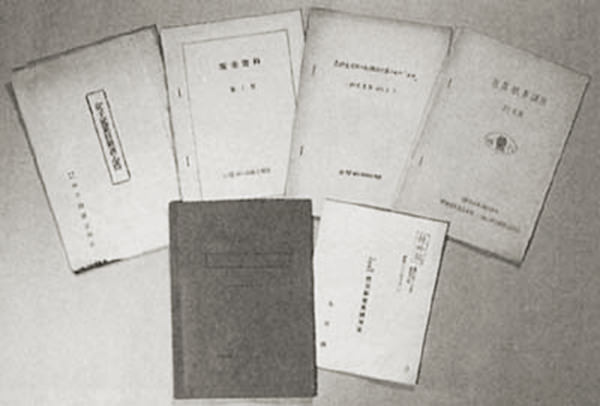
1949
Iida Office is spun off, establishing Watahan Dotetsu Hardware Store Co., Ltd.
New office building was completed in Shintomi-cho in Chuo-ku,
Tokyo.Headquarters was moved there.
1950
1951
Duro-Test Fluorescent Bulbs
From 1951 to 1953, NOHARA intensively sold fluorescent bulbs manufactured by the US-based Duro-Test Corporation, known as "the brightest and longest-lasting in the world."
This was an era when there was considerable variation among domestic goods, so by publicizing the top-ranking quality of the bulbs, the obscure startup company ,NOHARA, was able to deliver sales results strong enough to threaten major domestic manufacturers.
However, once the company decided to venture beyond mere acquisition of domestic distribution rights and into production and sales in Japan, it experienced the economic climate of tight controls on imports that characterized the postwar economic recovery period, as well as large companies' power to crush small and medium-sized dealers.
Standing at its single most critical juncture, NOHARA made the decision to focus on its primary business, construction materials.
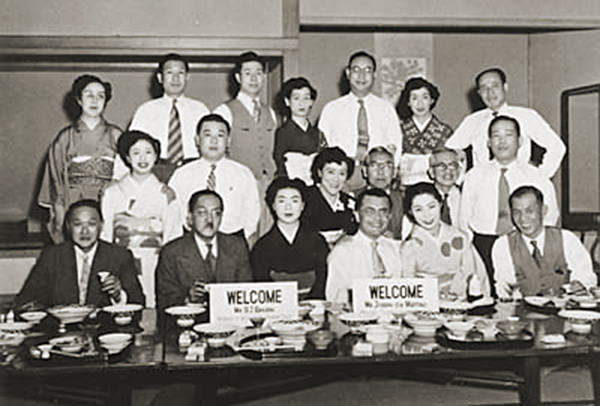
1953
Signing a distributor agreement with Nozawa Asbestos Cement Co.
(present Nozawa Corporation) gives the company a foothold in the building materials sales business in addition to the existing line of products such as bolts.
Volunteerism and the Birth of the Ryukyo Foundation
The founders received many requests from their hometown of Iida City to serve in social positions. However, they firmly declined those requests based on the Nohara family's teaching passed down over generations— "Reject all positions, and devote yourself to your primary business."
Nonetheless, they were enthusiastic about welfare targeting the local community. In 1953, a time when the concept of "volunteerism" was not yet entrenched, they launched the Ryukyo Foundation even as the emerging company was still busy trying to secure funds.
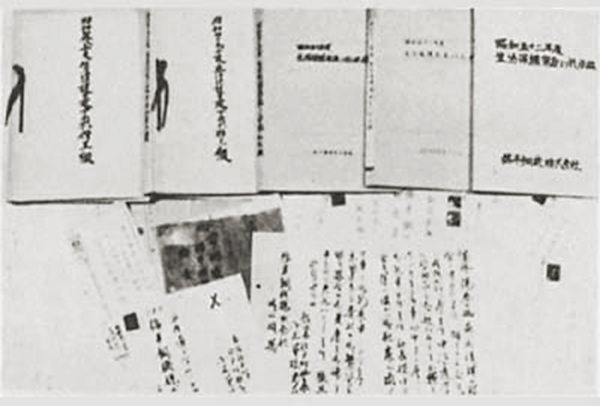
1956
Nagoya Branch opens.
Smokeless Furnace
During the late 1950s and early 1960s, new synthetic resin construction materials such as plastic pipes and corrugated panels emerged in addition to iron and cement.
Around this time, the Matsumoto branch received an offer to partner in the sale of a smokeless furnace. It was a patented product that provided better thermal efficiency and produced less smoke than existing ones.
Showcasing this unique product, NOHARA searched for well-financed, reputable hardware stores throughout the region and actively demonstrated it.
These demonstrations spread steadily but consistently, establishing footholds for business relationships with prestigious local stores.
In other words, NOHARA was able to sell in-demand products such as new construction materials through these newly created routes, leading to tremendous growth in sales.
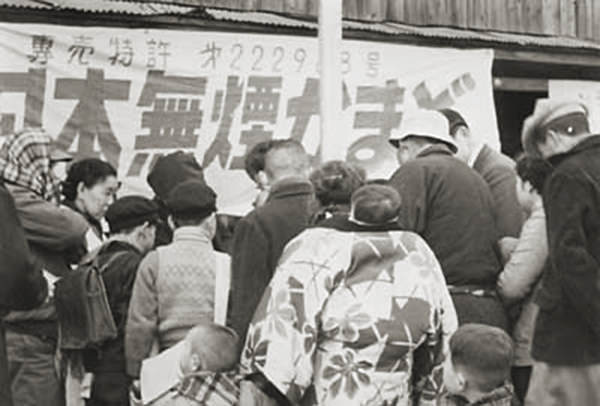
1958
New headquarters is completed in Yotsuya, Shinjuku-ku, Tokyo.
"Fuji Lights," invented and produced by the "Fuji Reflection Institute," is dealt.
During the late 1950s, road traffic improvement projects were stepped up as the era of privately owned cars steadily approached.
"Fuji Lights" was reflective sheeting capable of reflecting light like a mirror. It drew attention as a domestic product that could rival "Scotchlite" manufactured by the US-based 3M.
In 1958, NOHARA began handling the product on a full scale, with the catchphrase "Fuji Lights shine all day and night."
This product marked NOHARA's first entry into road signage, a brand-new field outside its traditional domain of construction materials.
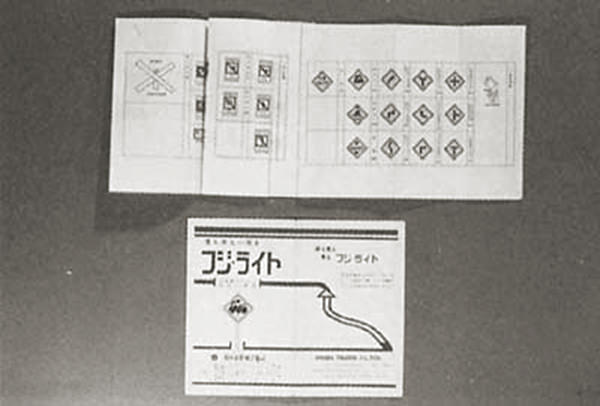
1959
Concrete Product Division is spun off, establishing Nohara Concrete Industry Co., Ltd.
1960
1960
Road Sign Division is spun off, establishing Fuji Chemical Industry Co., Ltd.Road signs Factory opened in Fuchu city, Tokyo.
The dealership is made with Yoshino Gypsum Co., Ltd., Asano Concrete Co., Ltd. and Tajima Ohyohkakoh Co., Ltd. Trading of construction material starts as major business domain.
1964
Osaka Branch (current Osaka Branch) opens.
1965
Fuji Chemical Industry Co., Ltd., a group company, is merged.
1966
Nohara Concrete Industry Co., Ltd., a group company, is merged.
1968
Higashi-Kanto Sales Office opened.
Omiya Sales Office (current Kita-Kanto Branch) opens.
Nozaki Seisakusho, a group company, is merged.
1969
Capital is increased to ¥100 million.
1970
1973
Nohara Soueikai is established, a member Association for the NOHARA CO.,LTD.'s clientele in Japan.
1974
Capital is increased to ¥200 million.
1976
Yokohama Sales Office is upgraded to Yokohama Branch.
1978
Tama Sales Office (current Nishi-Kanto Branch) opens.
Capital is increased to ¥330 million.
1979
Sendai Sales Office opens.
1980
1980
Sendai factory was completed. Sendai Sales Office was moved to the newly completed building and upgraded Tohoku Branch.
1981
Nohara Cement Sales Co., Ltd. is established.
Fukuoka Sales Office opens.
The Sagamihara Iron-bar processing Factory and Sagamihara Office (current Kanagawa Factory of Nohara Steel Co., Ltd.) open.
1982
Capital is increased to ¥430 million.
1983
Hiroshima Sales Office opens.
1986
Shizuoka Sales Office opens.
Okayama Sales Office opens.
1988
Kobe Sales Office opens.
1989
Yatsugatake Sports Center opened.
Hokuriku Sales Office opens.
Hiroshima Sales Office is moved to the newly completed Hiroshima Nohara Building.
1990
1990
Sapporo Sales Office and Takamatsu Sales Office open.
1991
Minami-Kyushu Sales Office opens.
1992
Nagano Sales Office opens.
Koriyama Sales Office and Chiba Sales Office open.
Nasu Road signs Factory is completed.
1995
Kobashi Co., Ltd. becomes a subsidiary and is renamed Nohara Ekujin Co., Ltd.
1997
Capital is increased to ¥612.1 million.
1998
Nishi-Kanto Branch and Kita-Kanto Branch are registered.
2000
2000
Niigata Sales Office opens.
Fit Real Estate Co., Ltd. is established.
Shonan Office is moved to Atsugi-city, Kanagawa and is renamed as Kanagawa Central Office.
Plast Co., Ltd. becomes a subsidiary and renamed Nohara Plast Co., Ltd. (current Nohara Steel Co., Ltd.)
2001
Headquarters are moved to Shinjuku, Shinjuku-ku, Tokyo.
Shinei Kogyo Co., Ltd. becomes a subsidiary and renamed Arc Saitama Co., Ltd. (current ARC-NOHARA CO., LTD.)
ISO9001 certification is obtained at headquarters.
2002
Arc Saitama Co., Ltd. is renamed ARC-NOHARA CO., LTD.
ARC-NOHARA CO., LTD. takes over construction business of Landscape Engineering Division.
2003
Shuko Japan Co., Ltd. was established.
ISO9001 certification is obtained at Nasu Road signs Factory.
2004
Nohara Ekujin Co., Ltd., a subsidiary, is merged.
2005
Utsunomiya Sales Office opens.
2007
Takasaki Sales Office opens.
2009
Nittobo Materials Co., Ltd. becomes a subsidiary. Business alliance is made with Nitto Boseki Co., Ltd.
2010
2010
Nohara Plast Co., Ltd. is renamed Nohara Steel Co., Ltd.
The company completed the Saitama iron-bar processing Factory.
2011
NOHARA WORKPLACE CO., LTD. was established in Shenyang, China.
2012
CAL CO., LTD. becomes a subsidiary.
NOHARA (SHANGHAI) TRADING CO., LTD. is established in Shanghai, China.
2014
NOHARA ENGINEERING CO., LTD. is established.
NOHARA INTERNATIONAL PTE. LTD. is established.
NOHARA ENGINEERING CO., LTD. takes over construction business.
2015
Rental Kitchen Space Patia 1st shop opens in Yotuya,Shinjuku-ku,Tokyo.
Sanei Sangyou Co.,Ltd. becomes a subsidiary.
PT.NOHARA ALTA INDONESIA is established.
Wallpaper brand "WhO" is released.
"aunworks" ,the largest e-commerce site of construction materials, is opened.
2016
NOHARA TRADING AND SERVICES INDIA PVT. LTD. is established.
Nohara Living Environment, Inc. is established.
2017
Nohara Holdings, Inc. is established.
KAZUO NOHARA is appointed Representative Director.
Changed our group structure in which all business will be led by a holding company, Nohara Holdings, Inc.
GOOD DESIGN STORE TOKYO by NOHARA Marunouchi store opens,
selling Good Design Award-winning Items.
Nohara Cement Sales Co., Ltd. is renamed NOHARA CEMENT CO., LTD.
JUSTKENZAI CO., LTD. is established.
BIMobject Japan, Inc. is established.The company is a co-owned subsidiary by Nohara Holdings, Inc. and Sweden Company BIMobject AB.
2018
KOSUKE NOHARA is appointed Representative Director of Nohara Holdings, Inc.
ONWA TECH INTERIOR DECORATION JOINT STOCK COMPANY is established.
2019
Build a strategic partnership with HOMMA, Inc.
2020
2020
Fit Real Estate Co., Ltd., a subsidiary, is merged.
GOOD DESIGN STORE TOKYO by NOHARA official online store opens.
2023
Nohara Group Inc. is formed from the merger of Nohara Co., Ltd., Nohara Living Environment, Inc., Nohara Engineering, Co., Ltd., and Nohara Holdings, Inc.
BuildApp service is launched as a platform supporting BIM-based design, production, and construction.
2024
BA-Plus Co., Ltd. Launched its service

